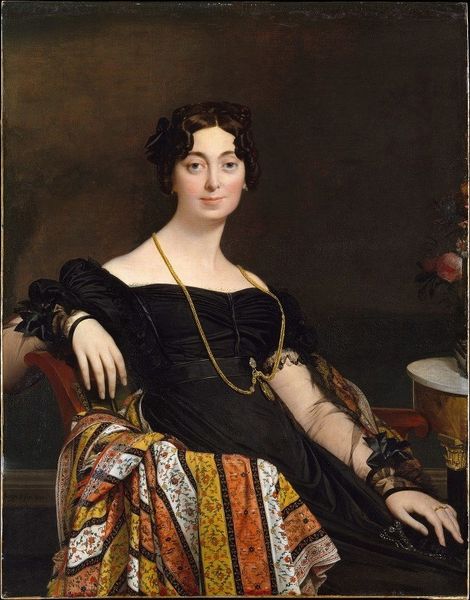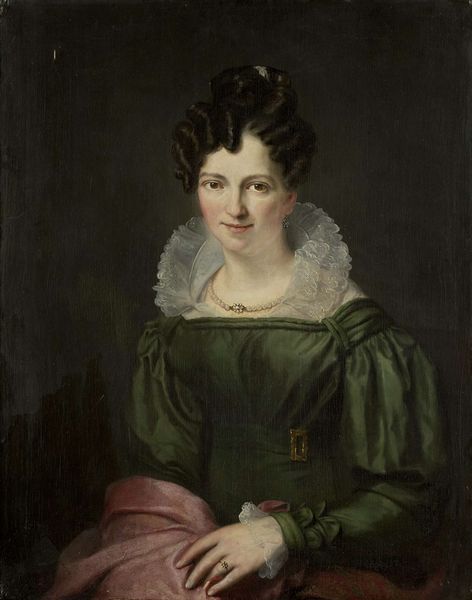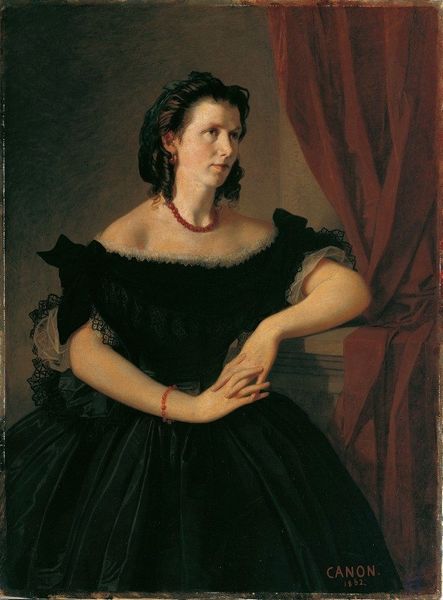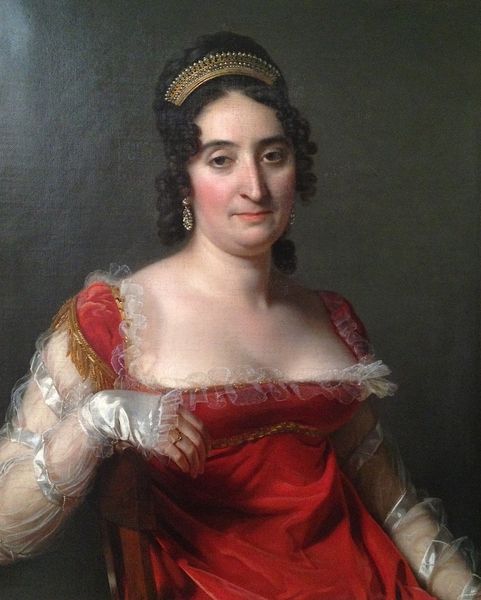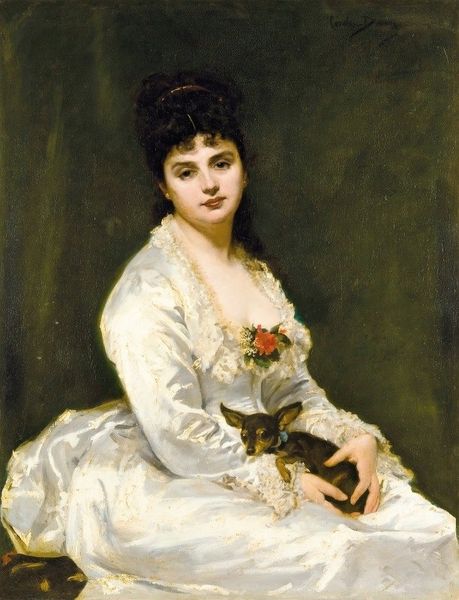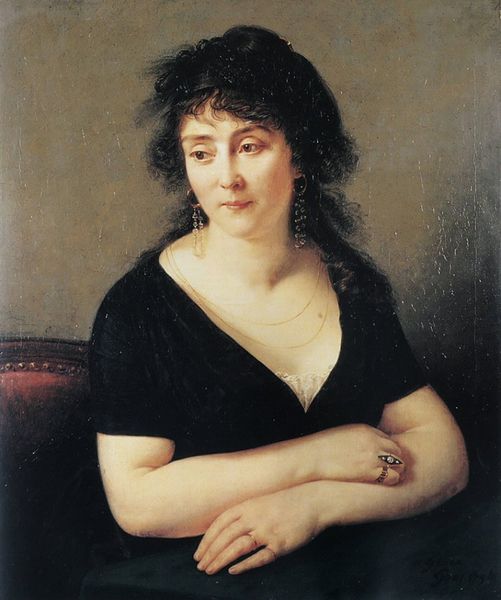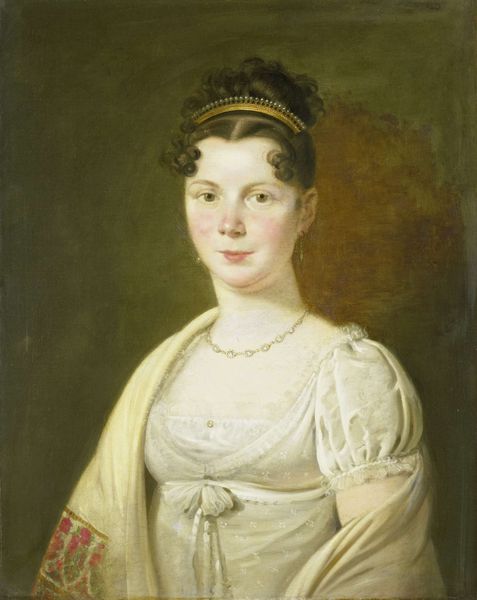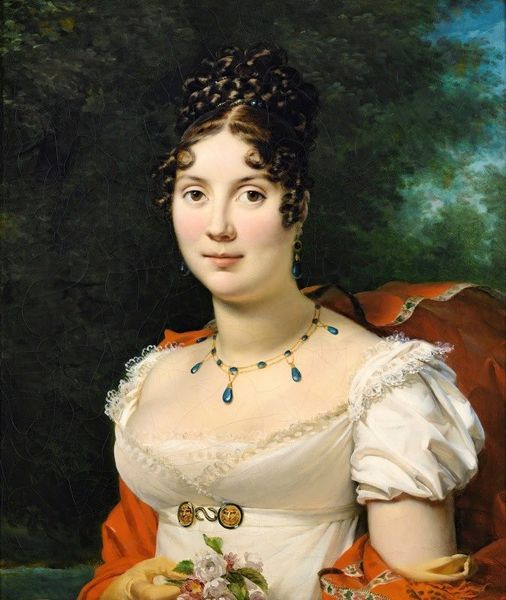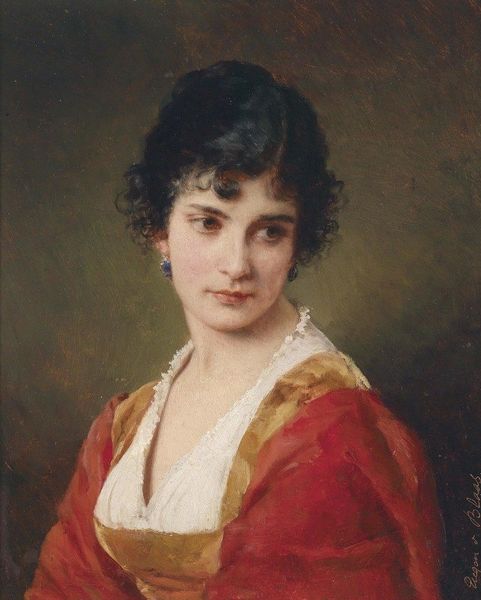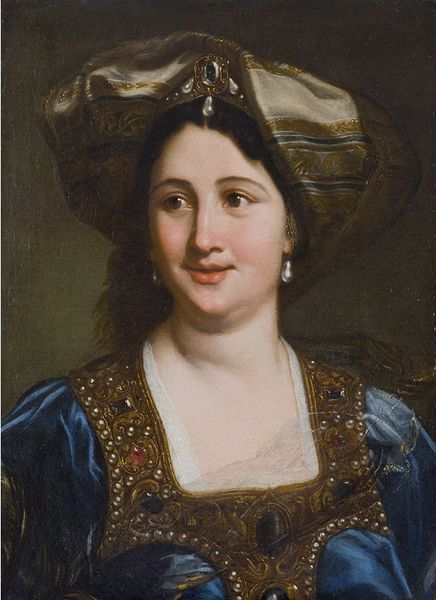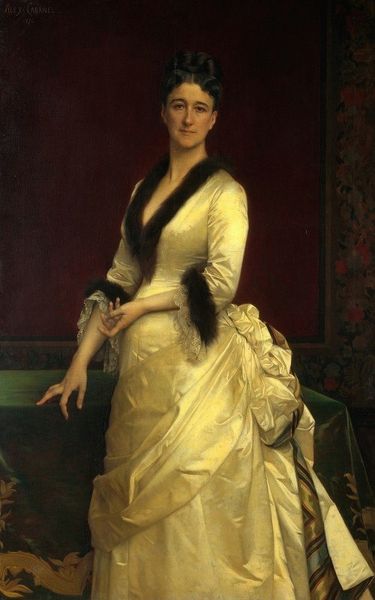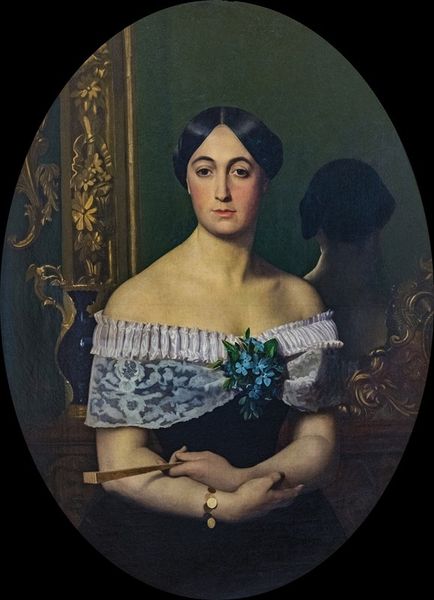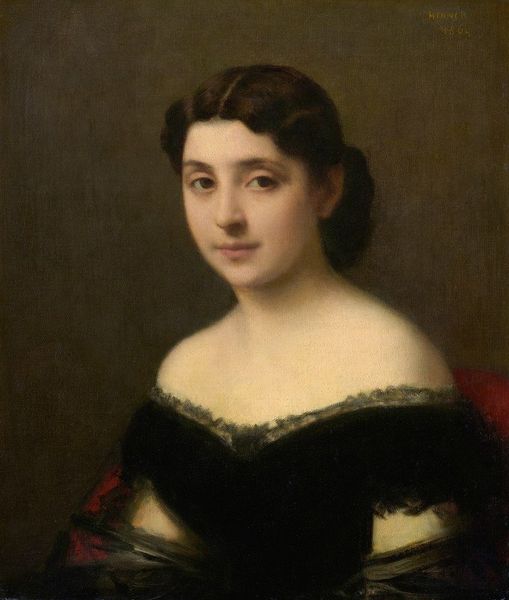
painting, oil-paint
#
portrait
#
neoclacissism
#
painting
#
oil-paint
#
figuration
#
intimism
#
history-painting
#
academic-art
#
realism
Dimensions: 93 x 68 cm
Copyright: Public domain
Editor: Here we have Jean-Auguste-Dominique Ingres's "Portrait of Madame Panckoucke," an oil painting from 1811. It's strikingly intimate, isn't it? There’s a quietness about her. What do you see in this piece, especially considering its historical context? Curator: It's much more than a portrait; it's a carefully constructed representation of bourgeois femininity at the cusp of profound social change. The Empire silhouette dress, for instance, signifies both status and a shift away from aristocratic excess. But consider Madame Panckoucke's gaze – direct yet demure. Do you think it reinforces or challenges the expected roles of women in post-Revolutionary France? Editor: I hadn't considered her gaze so deliberately. It's definitely not challenging in an overt way. More like… reserved confidence? Curator: Exactly! Think about the coded language embedded here: the coral jewelry subtly alluding to wealth and social standing, the carefully arranged shawl suggesting domesticity and grace. Ingres is navigating the complex negotiation of gender roles in a society redefining itself. This painting becomes a document of the evolving bourgeois identity. How does this understanding reshape your initial reaction? Editor: It moves her beyond a simple portrayal of beauty. Knowing that, the "quietness" I observed earlier transforms into a potent sense of self-possession within a constrained environment. Curator: And the historical context becomes inseparable from our viewing experience. It prompts us to consider the multifaceted layers of representation, power, and identity, shifting the way we understand not only Madame Panckoucke as an individual but the era itself. Editor: This has certainly reshaped my appreciation for portraiture as social commentary, and it goes beyond just liking what you see. I'm leaving here thinking differently! Curator: And hopefully considering how we can engage more critically with art as a reflection – and sometimes a subversion – of the society in which it was created.
Comments
No comments
Be the first to comment and join the conversation on the ultimate creative platform.
